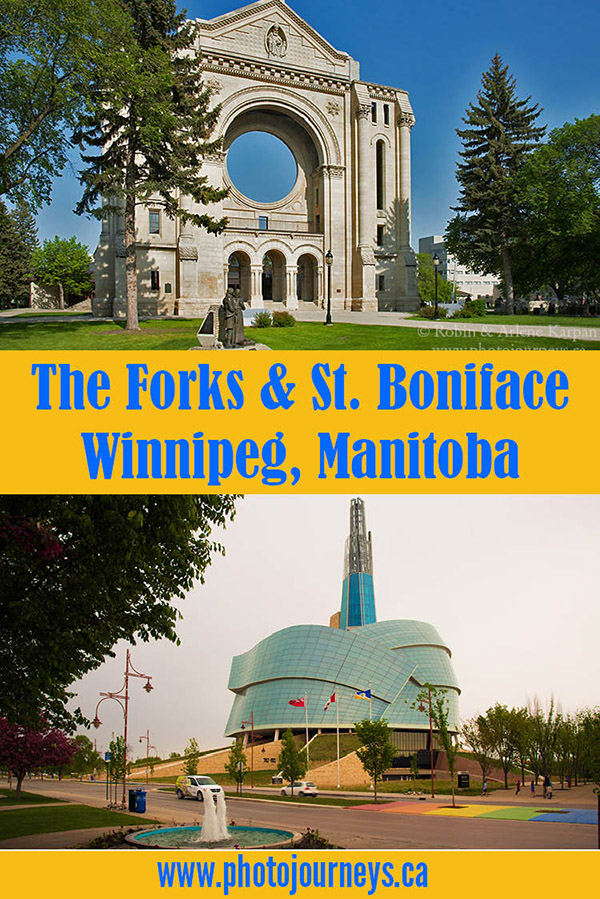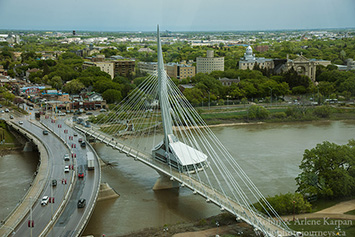
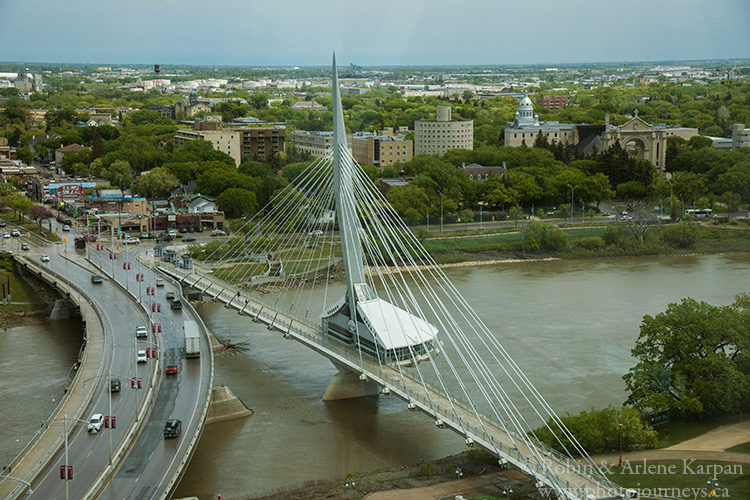
The Forks is not only Winnipeg’s top tourist attraction today; folks have been gathering here for centuries. It was named for the piece of land where the Assiniboine and Red Rivers meet. Just across the Red we find Old St. Boniface, with some of Winnipeg’s oldest historic buildings, and centre of the largest francophone community in Western Canada. Joining the two is one of Winnipeg’s iconic structures, the striking Esplanade Riel – a pedestrian bridge making it both easy and pleasant to explore both sides of the river in the heart of the city.
The Forks
The importance of this spot is nothing new. Archaeologists found evidence of campsites at The Forks as far back as 6,000 years. In the 1700s and 1800s, it became a hub of the fur trade. Then in the railway era, it was a key to rail development on the Prairies and immigration throughout western Canada. Much of the area was covered in rail yards.
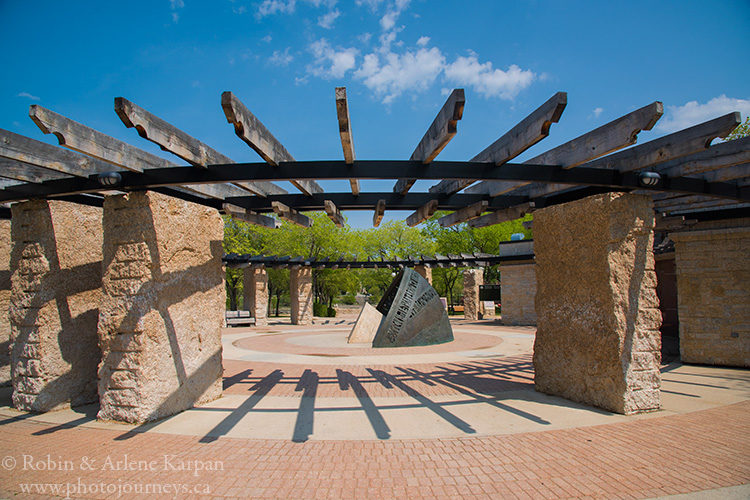
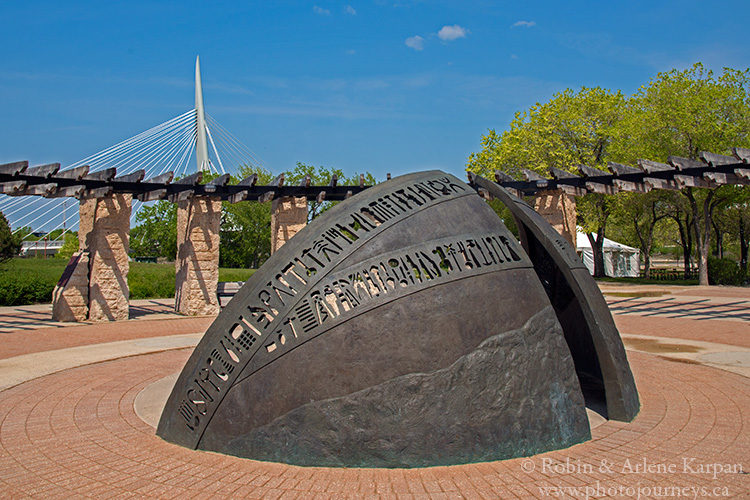
Today, the 56-acre piece of land close to downtown is home to parks, historic sites, museums, sculptures, shops, restaurants, venues for outdoor concerts, playground, tourist information centre, and more. Some of the old buildings used by the rail companies have been renovated and re-purposed. The Forks Market, originally horse stables in the early 1900s, is now a huge food emporium with more eating choices than you shake a skewer stick at. The Market Loft upstairs, formerly a hay loft, is mostly devoted to arts and crafts. Head higher up to the Market Tower with its sweeping views.
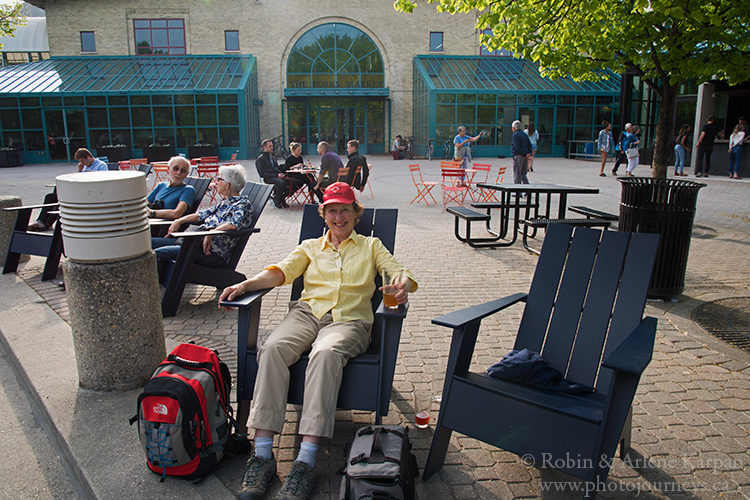
Nearby Johnson Terminal, once a cold storage warehouse, is now filled with shops and restaurants. The Forks Market Plaza and Canopy is between the two buildings. Look closely at one of the pillars on the Canopy, which has high water marks indicated, a reminder of devastating floods over the years when the Red River burst its banks.
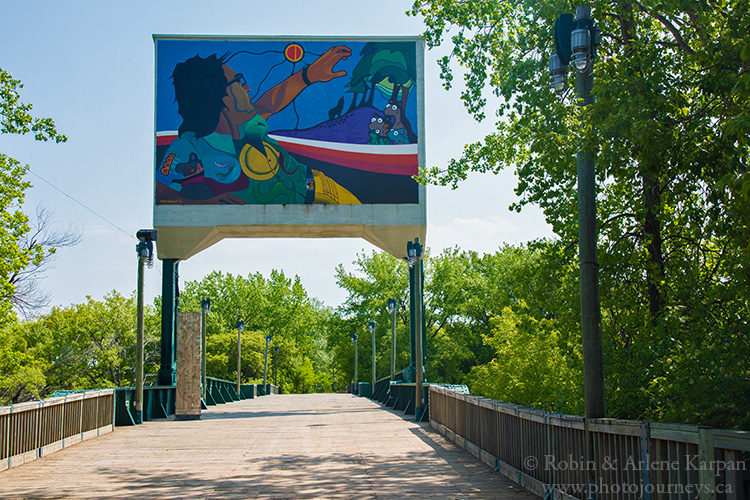
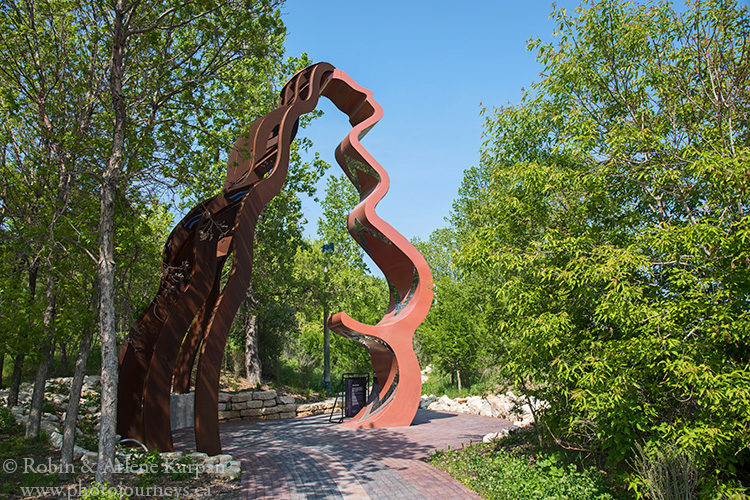
Wandering through the site, we pass a demonstration garden devoted to native prairie plants, the Historic Port on the Assiniboine River, now the jumping off point for boat trips, and the Oodena Celebration Circle. Oodena is Cree for “centre of the city”, and features a massive sundial, sculptures, and a place for powwows and other ceremonies and events.
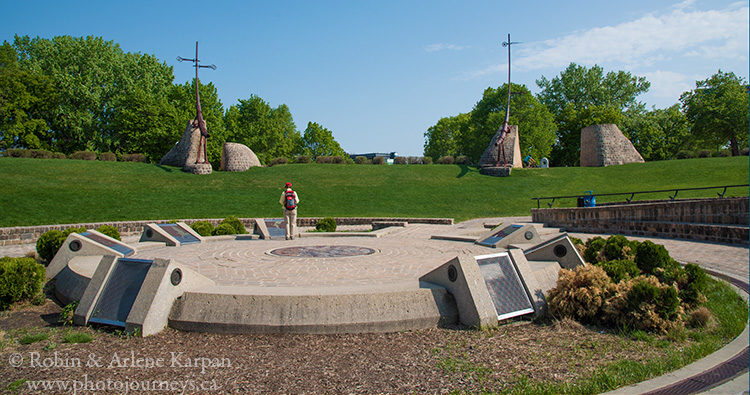
The Forks is a designated National Historic Site, with Parks Canada providing interpretation of its 6,000 years of history and leading guided walks. Museums of note include the Winnipeg Railway Museum, preserving the rich rail history of the city, and the Children’s Museum, housed in a former train repair building.
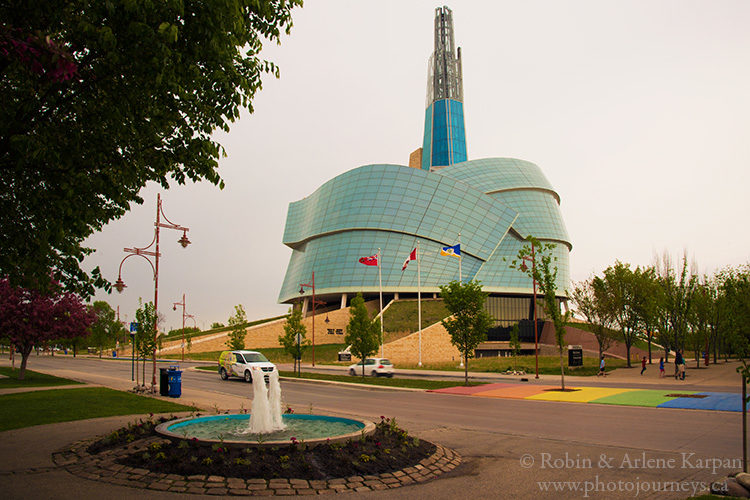
Canadian Museum for Human Rights
The Forks’ most famous museum, however, is undoubtedly the Canadian Museum for Human Rights (CMHR), noted both for its bold architecture that dominates the skyline, and its innovative approach, making it unique in the world. It’s the only national museum in Canada located in the west. A testament to the museum’s significance is that it’s featured on the new $10 bill, along with a portrait of Viola Desmond, who fought racial discrimination and whose story is told in the museum.
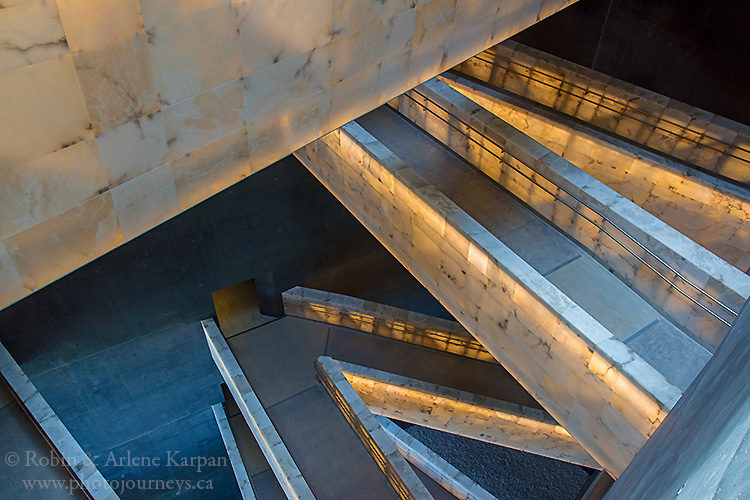
The museum’s 12 galleries look at the history of human rights through the ages, some of the world’s darkest atrocities such as the Holocaust, the Holodomor in Ukraine, and the Rwandan Genocide. A large part of the museum is devoted to Canada’s experience with episodes such as the expulsion of the Acadians, and Indian Residential Schools. Before visiting the museum, we couldn’t help but think that this would be a depressing place, considering the overwhelming number of human rights abuses in the world. The bad stuff is certainly there, but the strongest message is one of hope. The museum aptly describes a visit as a journey from darkness to light. There is so much here that we will be doing a future posting specifically on visiting the CMHR.
St. Boniface
Just outside the CHMR, we can take the short walk on the Esplanade Riel across the Red River to the historic section of St. Boniface. While St. Boniface has a wealth of attractions in its own right, it’s easy to hit a few of the highlights on a short walk from The Forks.
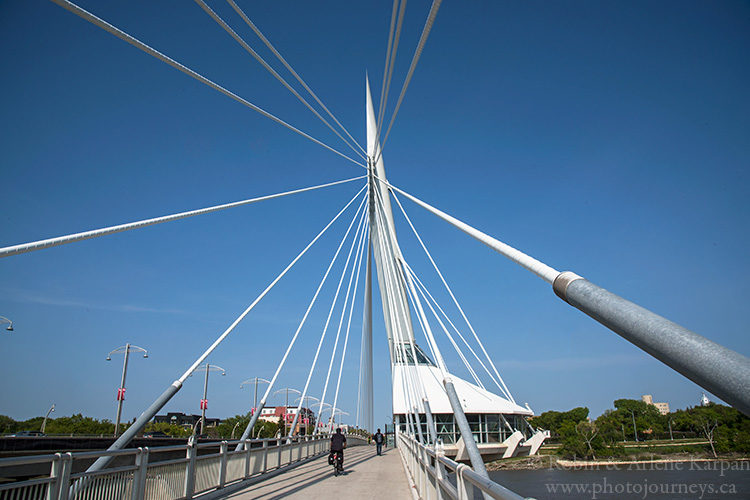
From its beginnings in 1818, the community became the centre of French and Metis culture in the early days of the Red River settlement. At one time it was the fifth largest community in Western Canada. St. Boniface became part of Winnipeg in 1972, although it still has a distinct feel to it, and is referred to as Winnipeg’s French Quarter.
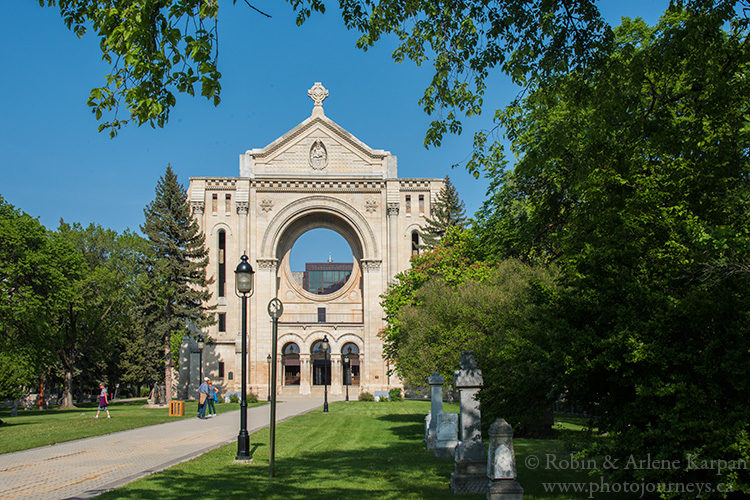
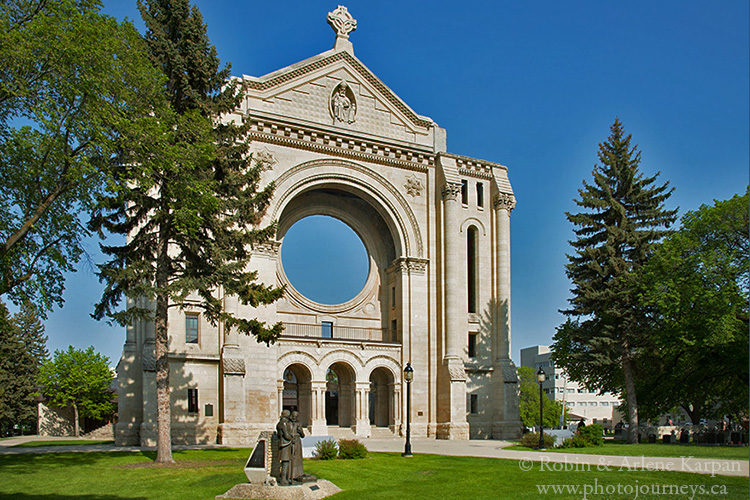
The most obvious landmark is the St. Boniface Cathedral, its massive facade clearly standing out near the riverbank. What we see at first glance is the facade and few remaining walls of the cathedral built in 1908 and destroyed by fire in 1968. The current cathedral is just behind, built inside the ruins of the older building.
The cathedral’s cemetery is just off to one side in front, but the grave of Louis Riel sits by itself. Considered the Father of Manitoba, the Metis leader led a popular uprising against the Canadian government that eventually led to the formation of the Province of Manitoba. Then in 1885, Riel led another uprising in what is now Saskatchewan which didn’t go so well, resulting in him being hanged for treason in Regina.
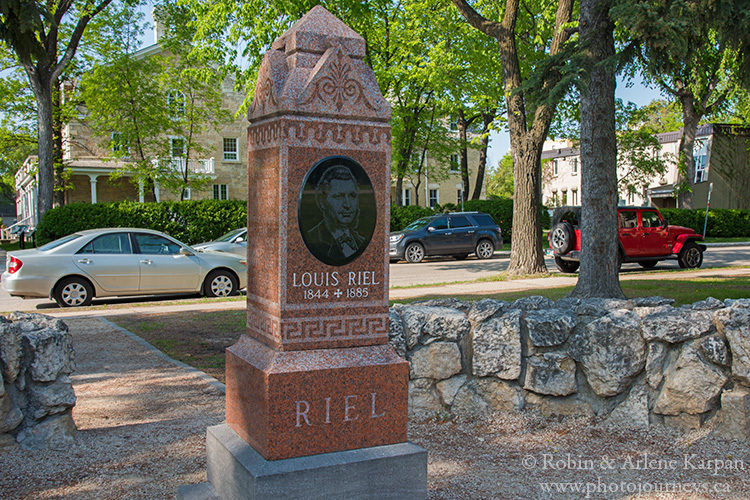
The complex story of Louis Riel, as well as the larger story of French-Canadian and Metis history in the west is told at the nearby St. Boniface Museum, housed in a former convent that is Winnipeg’s oldest building.
Just across the street from the cathedral stands the ornate Archbishop of St. Boniface Residence. Built in 1864, it is one of the oldest stone building left in western Canada, and is still used by the church. The garden in front and facing the river is a pleasant place to wander through.
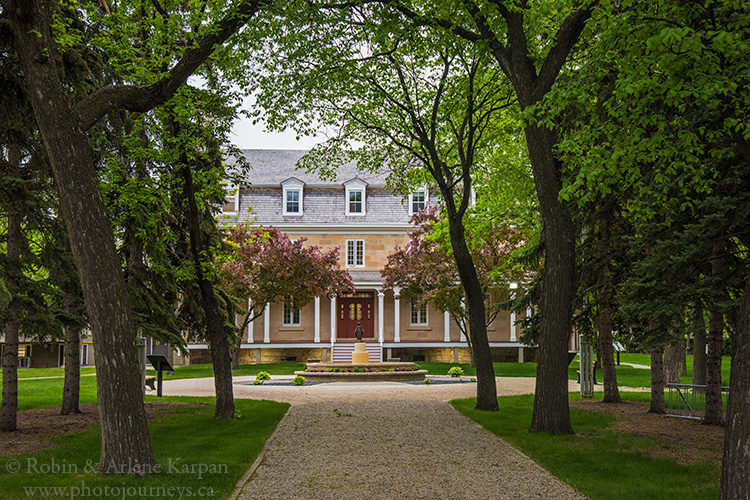
This is only a small taste of what these historic sections of Winnipeg have to offer. For more details, contact Tourism Winnipeg.
Subscribe to Photojourneys below
Feel free to PIN this article
